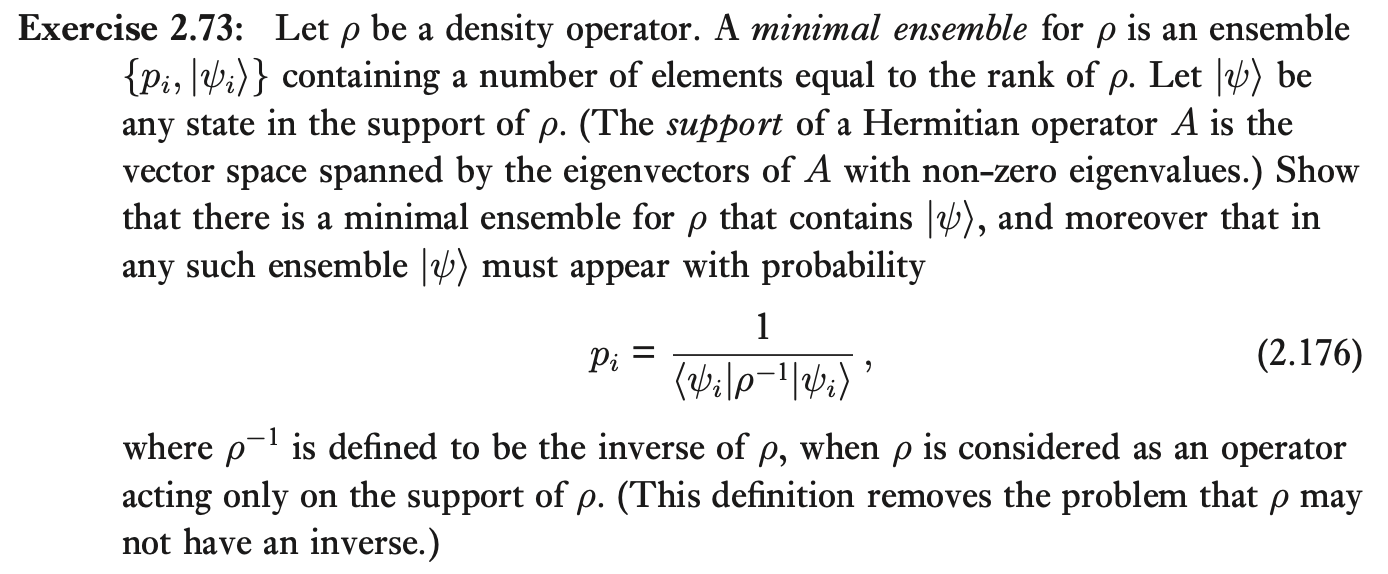I came across the following exercise (2.73) in Nielsen & Chuang and am trying to understand it intuitively.
Here is my reasoning of what is going on:
The purpose of this exercise:
Let’s say we are given a density matrix, $\rho$. We are finding a way to decompose it into an ensemble of pure states. One way would be to decompose it into its eigenvectors, and the corresponding probabilities are the eigenvalues. However, in this exercise, we are finding a more general approach to decomposing the density matrix into any ensemble of pure states, but the ensemble of pure states must span the vector space that the eigenvectors span.
How?
1). We take an arbitrary state vector, $|\psi\rangle$, with the condition that it must be in the support of $\rho$. The support of $\rho$ is the vector space that $\rho$ lives in.
2). We take the inverse of the density matrix, which inverts the eigenvalues (or probabilities) for each eigenvector of the density matrix. This inversion leaves us with low probabilities for eigenvectors that account for most of $\rho$, and high probabilities for eigenvectors that don’t contribute to $\rho$ as much
3). Now, we take the expectation of our arbitrary state, $|\psi\rangle$, with the inverted density matrix. To understand this expectation, let’s think about the expectation value if we left out all the eigenvalues. We would calculate the inner product of $|\psi\rangle$ with each eigenvector, and the result should be one because the eigenvectors span the vector space, so a linear combination of them should return exactly $|\psi\rangle$. Now, if we include the eigenvalues (not inverted), the result will tell us which direction (combination of eigenvector) $|\psi\rangle$ most closely aligns with, by adding together eigenvalues for all the different directions weighted by the inner product with that eigenvector. This just tells how much of our system represented by our density matrix is in the state $|\psi\rangle$, or the probability that our system is in the state $|\psi\rangle$.
Where is the flaw in my reasoning? And what is the correct explanation of what is going on in this exercise?

